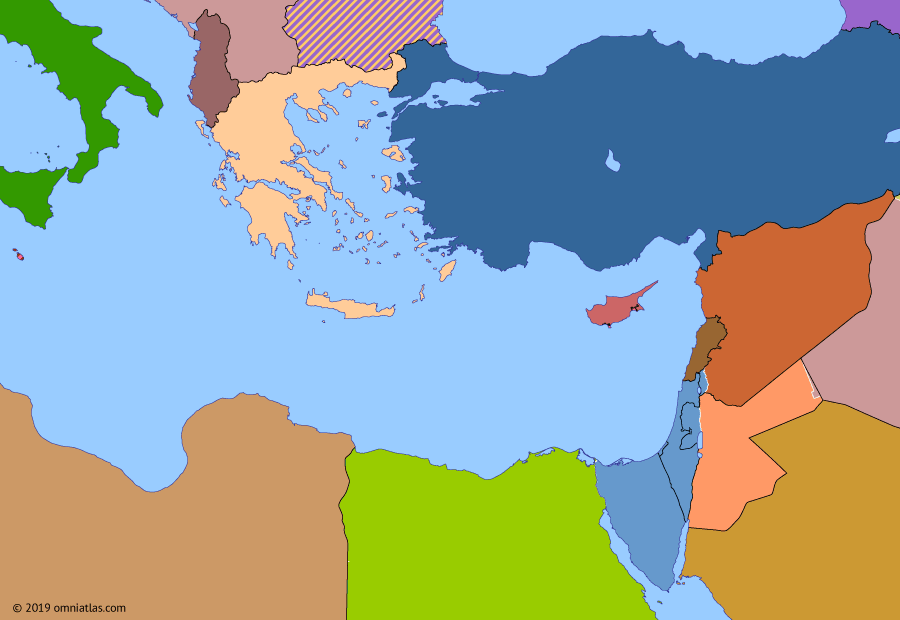Eastern Mediterranean 1967: Six-Day War

10 June 1967
10 Jun 1967
Six-Day War
15 May 1948 End of Mandatory Palestine
11 Jun 1948 First Arab–Israeli War
30 Dec 1948 Israeli Victory in Palestine
11 May 1949 UN Recognition of Israel
23 Jul 1952 Egyptian Revolution
13 Jun 1956 Rise of Nasser
7 Nov 1956 Suez Crisis
22 Feb 1958 United Arab Republic
19 Jul 1958 Nasser’s Zenith
21 Sep 1964 Independence of Cyprus and Malta
10 Jun 1967 Six-Day War
18 Sep 1970 Black September
8 Oct 1973 Yom Kippur War
24 Oct 1973 Yom Kippur War: Israeli Counterattack
During the 1960s tensions between Israel and its Arab neighbors continued to rise, fueled in large measure by Nasser’s anti-Israeli rhetoric and actions. In response to an Arab buildup on its borders, Israel struck first, defeating Egypt, Jordan, and Syria in just six days and seizing control of the Gaza Strip, Sinai, West Bank, and Golan Heights.